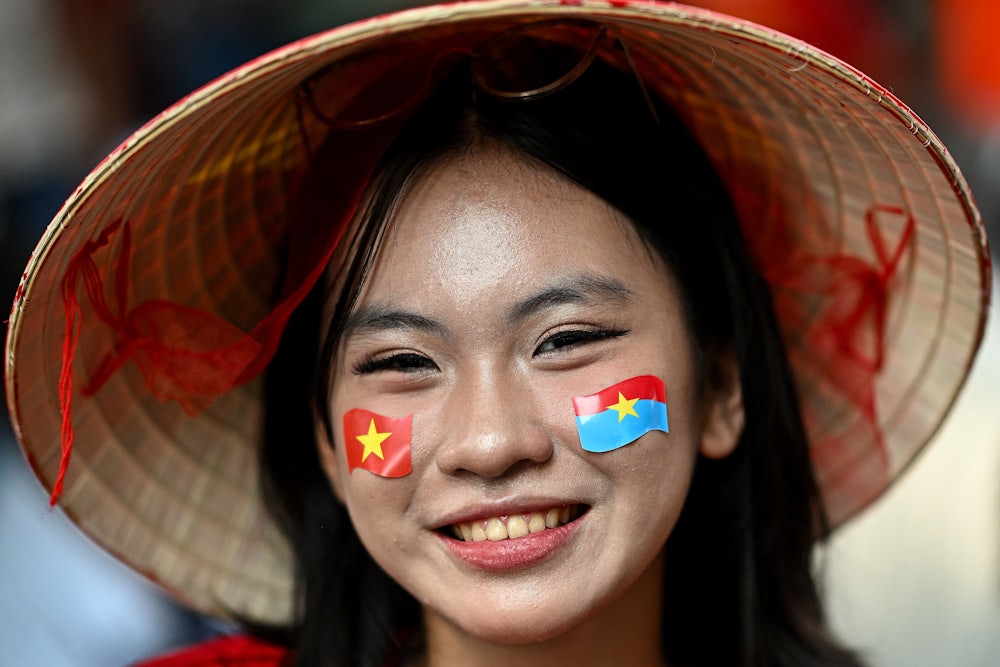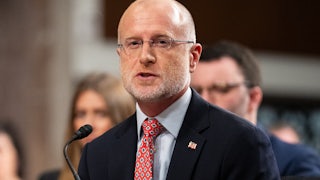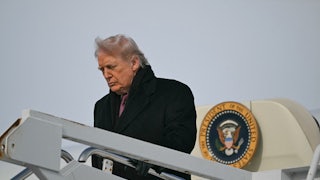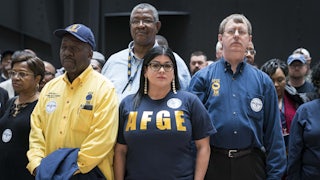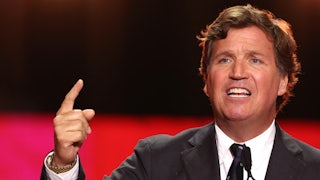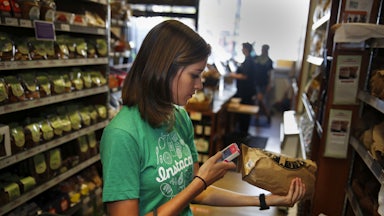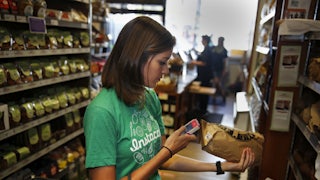Anniversaries are usually times to celebrate—a birth, a marriage, a victory, an extraordinary achievement. But last month’s fiftieth anniversary of the end of the Vietnam War was not for most Americans a normal anniversary, worthy of normal celebration. It received scant attention in the U.S. media and relatively few Americans seemed even to know about it. April 30 marked the end of a war that was misconceived from the start and was the first in our history that we lost—at great human cost, detriment to our self-confidence, and trust in our government. The anniversary might have been a time for America to reflect on the lessons of the war, and whether we have learned from them. This does not seem to have happened.
The Vietnamese, on the other hand, had every reason to celebrate the milestone, and they did so, magnificently. In Vietnamese culture, marking the anniversaries of the deaths of loved ones is extremely important, so the celebration of the country’s victory in the American War was also a time for recognizing its massive human and environmental cost—many hundreds of times greater than suffered by the losing United States.
In 1966, I was a junior at Harvard, and I had turned against the Vietnam War. But I gave in to my father’s pressure to remain in a Marine Corps officer candidate program and I served as a Marine lieutenant in Vietnam in 1968–1969. I was a supply officer at a field hospital near the DMZ and saw no combat, but I saw plenty of war’s carnage on the helicopter pad and in the triage room. I hated the war, but I also hated Vietnam and mistreated Vietnamese people, for which I later felt very ashamed. In the late 1990s, I had the opportunity to return to Vietnam to try to atone for my sins. I worked on HIV/AIDS prevention and treatment projects there for almost 20 years and lived in Hanoi for five years during that time. I came to love Vietnam and the Vietnamese people, and Vietnam has become a second home to which I return every year.
My own history thus gave me good reason to celebrate the anniversary of the end of the war—even though it never should have started and never should have lasted as long as it did.
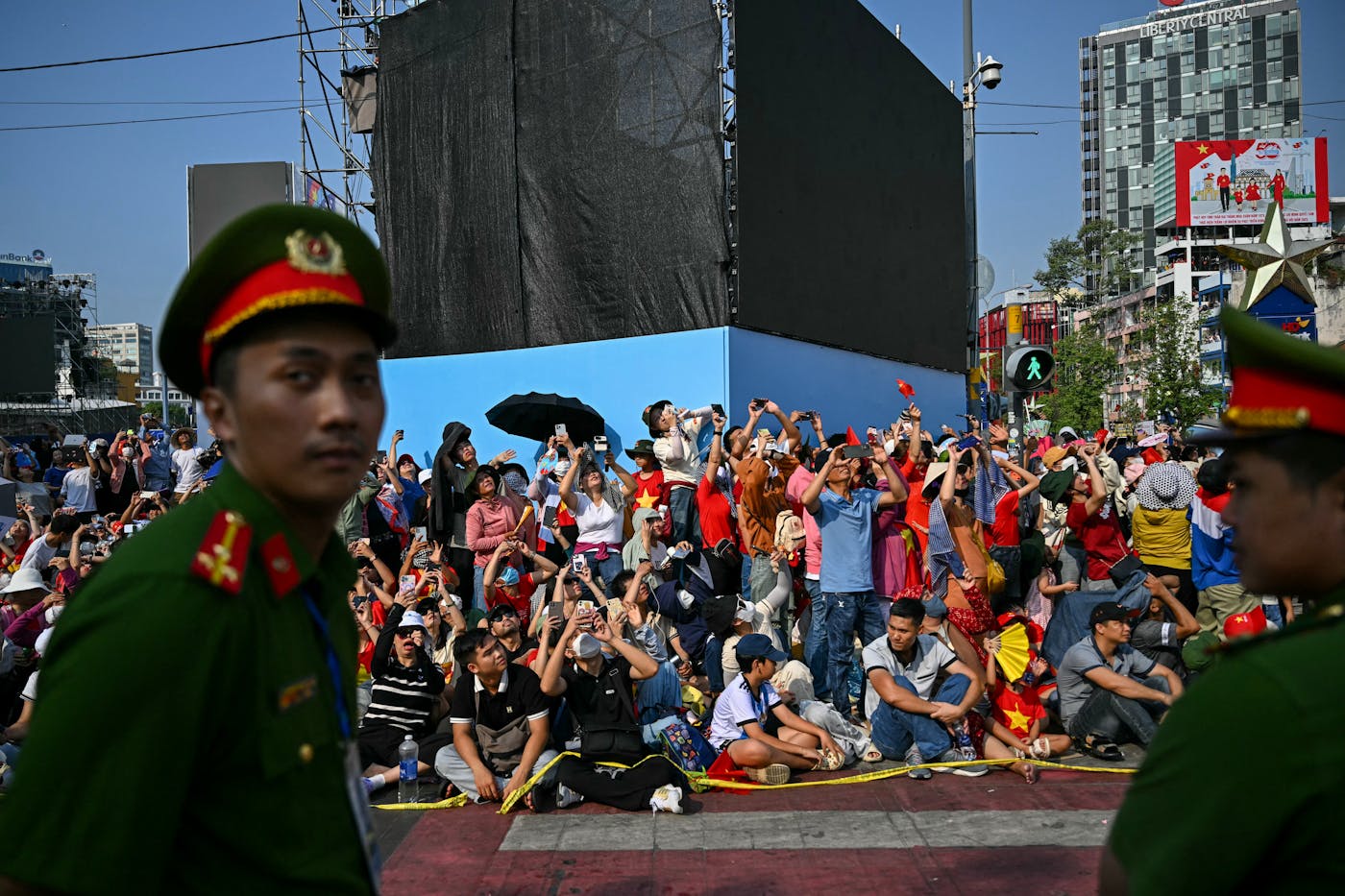
For me, and for many Americans and Vietnamese, the anniversary was not just marking the end of something, but also the “long, strange trip” of reconciliation, friendship, and partnership between the United States and Vietnam since the war ended in 1975. John Terzano, an American veteran who has devoted years to the work of U.S.-Vietnam postwar reconciliation, points out that it is a unique story in the annals of war—the first time that veterans of a losing war played leading roles in building friendship and partnership to the benefit of their victorious former enemies.
America’s reconciliation with Vietnam did not get off to a good start. The U.S. reneged on its commitment in the Paris Peace Accords to provide major funding to Vietnam to help rebuild the country and instead imposed a crippling trade embargo that, along with its own government’s misguided economic policies, plunged Vietnam into poverty and near starvation for a decade. Vietnam launched đổi mới or “renovation” of its economic system in the mid-1980s and the U.S. lifted the trade embargo in 1994. Diplomatic relations were normalized in 1995. Pete Peterson, a former U.S. Air Force fighter pilot and prisoner of war in Vietnam, became the first American ambassador. A prerequisite for these advances in bilateral relations was that Vietnam assist the U.S. to locate the remains of as many as possible of our soldiers and Marines missing in action, or MIA. The U.S. did not reciprocate by assisting Vietnam to find the remains of its estimated 200,000 MIAs until the 2010s, part of the long and arduous journey toward reconciliation and partnership.
I went to Vietnam for the fiftieth anniversary to celebrate both the end of the war and the economic, social, and strategic benefits to both countries produced by our reconciliation, friendship, and diplomatic partnership. However, a funny thing happened on the way to the celebration—the Trump administration took actions that seriously threaten these hard-won achievements. It announced 46 percent tariffs on imports from Vietnam (the U.S. is Vietnam’s largest export trading partner), closed the United States Agency for International Development’s mission, and cancelled almost all U.S.-funded public health, environmental, and other humanitarian projects. (These closures and cancellations occurred worldwide.) Almost all of my Vietnamese friends and former colleagues lost their jobs. Important work to prevent and treat HIV/AIDS, tuberculosis, and other infectious diseases and to reduce emissions and mitigate climate change and address other environmental issues were terminated.
I was hoping to contribute to the fiftieth anniversary celebration. I proposed to staff at the U.S. embassy giving a talk at the American Center in Hanoi about my story as a veteran who came back to Vietnam after the war to try to do some good after all the harms inflicted by America. The response was at first positive, but shortly before I was to leave for Vietnam. I was informed that, pursuant to orders from Washington, all U.S. government-sponsored anniversary events were to be “paused”—Trump-speak for “cancelled.” Damien Cave, the New York Times Vietnam bureau chief, reported that not only were U.S. government sponsored events cancelled, but U.S. officials were also prohibited from participating in any anniversary events sponsored by the Vietnamese government or anybody else. This prohibition was quietly eased slightly at the last minute, as the U.S. consul general did appear at one Vietnamese government anniversary event on April 30. The ambassador did not appear, however, nor did any other high-ranking American official. This was surely taken as an insult by the Vietnamese.
With the assistance of several Vietnamese friends and colleagues, I organized what may have been the only fiftieth anniversary event sponsored by an American individual or organization: a panel discussion held at the appropriately named Hope Café in Hanoi. This café is run by Phạm Thị Minh, a 15-year heroin addict who became a peer educator on a USAID-funded HIV prevention project for sexual partners of people who inject drugs. Minh turned her life around, married and had children, and helped launch a movement of community-based organizations to fight HIV/AIDS, improve substance use treatment, and support women’s rights. Minh joined the panel to tell her story.
Other speakers described projects on “war legacies” and public health funded by the U.S. that were important contributions to reconciliation and products of the formal multi-sectoral partnership between the U.S and Vietnam that was established in 2013, and elevated to a comprehensive strategic partnership under President Biden in 2023. This partnership formalized Vietnam’s important role as a balance to China in the region, thereby benefitting America’s strategic position and our national security.
Ngô Xuân Hiền told the audience about Project RENEW in Quang Tri Province, which has been substantially funded by the U.S. It was co-founded by U.S. Army veteran Chuck Searcy and initially funded by Vietnam Veterans Memorial Fund, or VVMF, half of which was provided by Christos Cotsakos, who served in Quang Tri in 1967–1968. RENEW has worked for over 20 years to remove unexploded ordnance, or UXO—bombs, artillery shells, mortar rounds, grenades—from Quang Tri province, the most heavily bombed part of South Vietnam (indeed, the most heavily bombed of any place in any war), and the site of the bloodiest fighting of the war. Forty percent of the mapped hazardous areas have been cleared and UXO-related injuries, which are often suffered by children, have been significantly reduced. However, 60 percent of the hazardous areas in Quang Tri remain to be cleared, and the work needs to be expanded to other provinces.
The audience also heard about projects involving Harvard’s Kennedy School, the U.S. Institute of Peace, and the U.S. Defense Department that are sharing U.S.-captured documents with the Vietnamese Ministry of Defence and Vietnamese families to help locate the remains of missing Vietnamese soldiers from all sides in the war. These projects are also returning captured diaries, letters, and other personal documents to the families of fallen Vietnamese soldiers. The Kennedy School project held ceremonies during the anniversary week in Hanoi, Ho Chi Minh City, and Nghe An (Ho Chi Minh’s home) at which documents were returned to twenty-three families.
Hoàng Tú Anh, founder of a Vietnamese nongovernmental organization, described its U.S.-funded programs to provide support to people with war-related disabilities. These programs also assist victims of domestic violence, some of which may result from inter-generational post-traumatic stress disorders related to the war. Most of these “war legacies” projects, as well as others to clean up Agent Orange (dioxin) storage sites, were cancelled but then restored temporarily when the Vietnamese government strongly protested. Their longer-term funding remains uncertain. The U.S. has an undeniable moral responsibility to repair the harms and legacies it brought upon Vietnam and the Vietnamese people by our war of choice in their country. Trump probably doesn’t care about this, but it remains a moral and ethical imperative.
With funding from USAID, the U.S. Institute of Peace, an independent agency established by Congress in 1984, has been working for several years with the Vietnamese government and the War Remnants Museum in Ho Chi Minh City, to develop an exhibit on U.S.-Vietnam reconciliation and partnership since the war, focusing on the “war legacies” work. The design had been completed, and construction of the exhibit begun, with the opening scheduled for the thirtieth anniversary of normalization of diplomatic relations in July 2025. However, on March 17, 2025, the Department of Government Efficiency unlawfully invaded USIP’s Washington headquarters and essentially abolished the agency. The museum exhibit was cancelled.
Nguyễn Phương Lan told how a U.S.-funded Fulbright fellowship had enabled her to attend Harvard School of Public Health, after which she returned to Vietnam and worked on many projects which helped Vietnam combat HIV/AIDS, tuberculosis, and Covid-19. The PEPFAR program, initiated by U.S. President George W. Bush, helped bring HIV treatment to all Vietnamese people in need of it and supported a variety of effective HIV/AIDS prevention programs. These efforts combined to bring the HIV epidemic in Vietnam under control and keep it under control over the last 15 years. With the cancellation of most HIV-related projects, epidemic resurgence is possible. Tuberculosis remains endemic in Vietnam, but progress was being made against it with the help of U.S. funding. Now, most of that work has been cancelled. Lan waited more than a year for a USAID-funded TB treatment project to be approved by the Vietnamese government. That approval was finally received at the end of January, but the very next day DOGE cancelled the project.
I served as Abt Global’s chief of party for USAID’s Health Financing and Governance Project in Vietnam in 2017–2018. My former HFG colleagues, all of whom have lost their jobs, told me that they are extremely proud of their accomplishments for the benefit of the Vietnamese and American people. In response to DOGE’s demand to justify continuation of HFG’s successor project, Nguyễn Thị Hiền and Nguyễn Thị Dịu of Abt Global wrote that with USAID’s support,
Vietnam is on course to assume full financing and management of its HIV and TB responses. The government’s Social Health Insurance (SHI) fund has become the main financing agent for HIV and TB treatment. Currently nearly 160,000 people living with HIV and 105,000 TB patients are receiving treatment through SHI fund. This domestic funding contributes 53 percent of the cost of the HIV program and 75 percent of the TB program. Continuation of USAID’s health system strengthening projects could solidify and increase the gains in domestic funding for HIV and TB treatment, further improve medication procurement and supply chains, engage more community-based organizations in prevention and care, and improve prevention, detection, and response to emerging infectious diseases. These are key factors in global health security that have a direct impact on U.S. public health and economic prosperity.
The global health systems projects, which had achieved such noteworthy progress in Vietnam and elsewhere, were cancelled by the Trump administration.
The more I heard about the deleterious effects of the Trump policies on Vietnam, the angrier I became. In the last-minute planning session for the panel event, I argued for being more outspoken about these feelings. My Vietnamese colleagues cautioned me against this, worrying that overt political statements could backfire to the harm of the Vietnamese who are in the midst of efforts to negotiate a better trade agreement with the U.S. So, it was agreed that we would focus on the positive—all the benefits that U.S.-Vietnam reconciliation and partnership have produced for both peoples and the hope that these challenges could and would be overcome. After all, there had been serious challenges for more than 10 years after the war’s end and periodically long after that—such as with the effort to mitigate the effects of Agent Orange, which was stalled for years over the lack of scientifically proven “causation.” These challenges had been overcome through hard work, resilience, and finally American acceptance that its moral responsibility to repair the harms it had caused must overrule a scientific technicality.
We had decided that our panel discussion should accentuate the positive. A Vietnamese student sought to inject a “note of reality” into the discussion. I responded that there was indeed “an elephant in the room” but that we really wanted hope to prevail at Hope Café. However, I emphasized that real hope must be nurtured by action.
Thảo Griffiths, a longtime advocate for U.S.–Vietnam relations and a commissioner of the International Commission on Missing Persons, attended the event. Afterwards, she reported:
It was a profoundly moving evening. John Terzano and I were both deeply emotional, and we decided to take a drive on my motorbike to the Long Bien Bridge. [Long Biên Bridge is an icon of Vietnam’s wartime resilience, it was knocked down multiple times by U.S. bombing and each time quickly rebuilt so that this vital supply link was maintained.] Standing there, feeling the breeze from the Red River, was a cathartic experience. We were deeply inspired by the Vietnamese speakers’ unwavering resilience and their unshakeable commitment to continue their humanitarian work, with or without US support. It was a truly beautiful and unforgettable evening.
Indeed, my visit to Vietnam for the fiftieth anniversary of the end of the American War and the celebration of the fruits of our reconciliation and partnership provided much reason for hope—for Vietnam, if not for America. The massive outpouring of patriotism and national pride in the anniversary celebrations was remarkable. I flew from Hanoi to Ho Chi Minh City the evening of April 29, expecting to be able to find a good spot to watch the ceremony and parade on the actual anniversary, April 30. The crowds, which must have been in the millions, filling the streets and gathering to sleep on the sidewalks to secure places for the next morning were so huge and widespread that it took more than two hours to reach my hotel from the airport. Throughout the downtown (District 1) were large groups of families and friends, with food and drink, all wearing patriotic clothing and carrying small Vietnamese flags.
My hotel was at least a kilometer from the parade route, but when I set out at 5:30 a.m. to find my spot to watch the parade, the streets all around my hotel were filled with people. It was already extremely hot. I was only able to make it a few blocks and never got anywhere near the parade route. So, I just hung out and enjoyed being in this joyful crowd for a little while and then repaired to my air-conditioned hotel room and watched the parade on TV. It was a spectacular show, including beautiful floats, dancers, dragons, and many marching units of police, army, mass organizations, men and women, young and old. There were flyovers by fighter jets (with cameras in the cockpits for the TV coverage) and helicopters towing big Vietnam flags. Troops from Cambodia, Laos, and China also marched in the parade. China and Vietnam are ancient enemies, a fact overlooked by the policymakers of the American War, but currently major trading partners despite their continuing dispute over the islands of the East Sea. The Trump policies could well be bending Vietnam’s “bamboo diplomacy” (seeking to play both sides to its advantage) more in the direction of China.
Trump’s actions may not (yet) have turned ordinary Vietnamese people against the United States. Clothing with American flags and the New York Yankees logo remain ubiquitous and, in my observation and experience, the Vietnamese people remain very friendly and welcoming to Americans. I talked with Mr. Độ, a veteran of the North Vietnamese Army who was enthusiastic about meeting an American advisor to the ARVN (South Vietnamese Army) he had fought in the bloody battle of “Charlie Hill” in the Central Highlands in 1972. I also visited the grave of the father of my friend and colleague Khuất Thị Hải Oanh. He commanded the NVA troops in that battle. Both sides have portrayed this battle as a victory and the veterans would like to learn about each other’s strategies and their interpretations of the outcome. Dialogue among veterans can nurture mutual respect and contribute to reconciliation. As veterans age, the opportunities for such meetings and dialogue diminish.
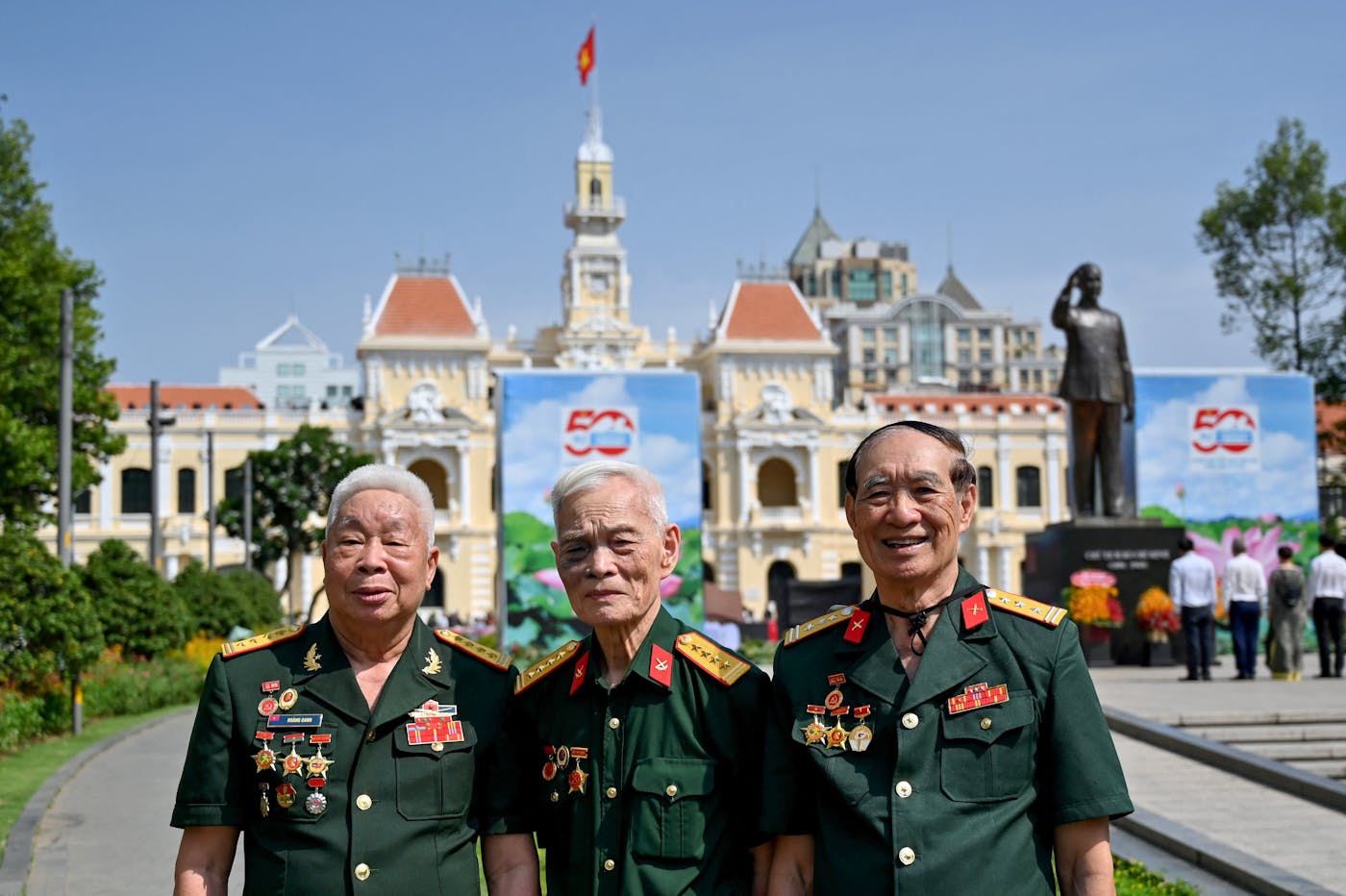
I was interviewed by a reporter for Tuổi Trẻ, a well-respected organ of the Vietnam’s Communist Party. His article used none of the points I had made about the challenges facing U.S.-Vietnam reconciliation and partnership due to Trump’s policies and my sharp criticism of those policies. As with our panel discussion, the article focused on the positive results and benefits, as if there were no challenges. This focus was no doubt strategic, in that Vietnam is avoiding overt criticism or complaint about U.S. policies as it is engaged in delicate negotiations aimed at securing a more favorable trade agreement.
Last, but by no means least, hope springs from the historic courage, patriotism, dedication, and resilience of the Vietnamese people. Several of my Vietnamese friends took me to see the new, and brilliantly done, Vietnamese film Địa Đạo: Mặt Trời Trong Bóng Tối (Tunnels: Sun in the Dark). It tells the story of the heroic Viet Cong soldiers who lived in and fought from the Cu Chi tunnels near Saigon during 1967. These tunnels, like those in Vinh Moc, just north of the former DMZ, have been restored as popular tourist attractions. I recall the first time I visited the Vinh Moc tunnels in 1997. Hearing how an entire village lived in the humid and claustrophobic space for more than three years under U.S. bombing—giving birth to babies, emerging to plant and harvest their crops, and remaining loyal and devoted to their country—convinced me that the U.S. could never have won the war. That feeling was only reinforced by seeing Tunnels.
On the drive back to Hanoi from visiting her father’s grave, my friend Oanh and I had a talk about the future. She said that Vietnam had always been able to overcome its challenges, no matter how lengthy and difficult the struggle. She is convinced that Vietnam will again prevail, regardless of whether Trump’s destructive policies stand or fall and in spite of its own internal political difficulties. The colleagues and friends that I saw during my visit implicitly confirmed this hope by their cheerful and forthright conviction that “things will work out.” After we saw Tunnels together—they all wore Vietnam flag t-shirts and “Tôi yêu Việt Nam” (“I love Vietnam”) bracelets—we gathered for a festive lunch. Amid the laughter and good cheer, one of my friends told me that they had all just that morning received letters terminating their employment, with only the very modest severance pay required under Vietnamese labor law.
I pray that the hope I saw and heard among the Vietnamese people as they celebrated the victorious end of the war that reunited their country is prescient, that Vietnam will survive and continue to thrive. In the end, it struck me that I had fallen into “white savior” mode when I assumed that Vietnam would collapse without U.S. assistance. As Oanh said, Vietnam had always been able to take care of itself and always would be. This by no means absolves us of the responsibility to fight the unjust and harmful policies of the Trump Administration but it gives hope that Vietnam’s survival and well-being do not depend entirely on the success of those efforts.
